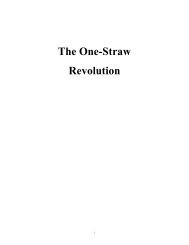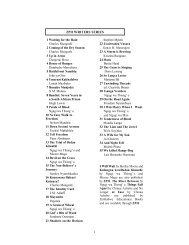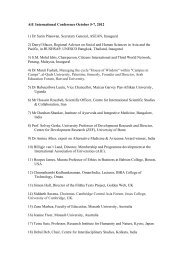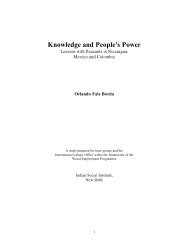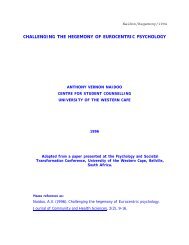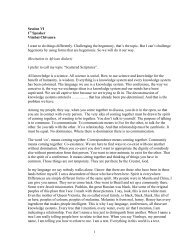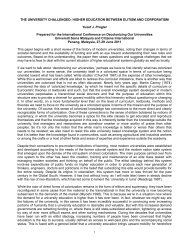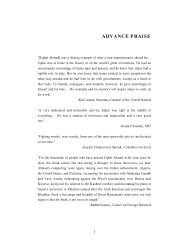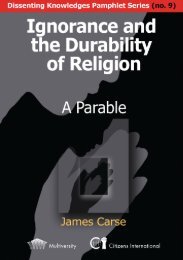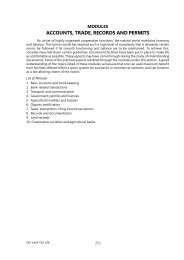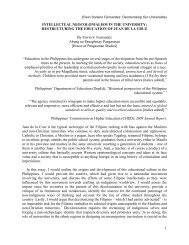... for they have their own thoughts - Multiworld India
... for they have their own thoughts - Multiworld India
... for they have their own thoughts - Multiworld India
Create successful ePaper yourself
Turn your PDF publications into a flip-book with our unique Google optimized e-Paper software.
2005 Goa, <strong>India</strong>39SUMAVANAMSumavanam is a small village school drawing itsinspiration from David Horsburgh. It has 20 students inthe age group of 8-14 years. There are no competitionsand no exams. We <strong>have</strong> been influenced byseveral writers of education, science, and math. Allof us sit in a room of 20’ by 12’ with individual desk<strong>for</strong> each student. It is a fact that children in our areado not get the affection, attention and time ofparents. There is a felt need to make those basicrelations complete. For the first few months allnewcomers start with oral work and are familiarisedwith listening, speaking and memorizing. We do thiswork with stories, flashcards and many languagegames that Usha has developed over the years.David Horsburgh encouraged teachers to make<strong>their</strong> <strong>own</strong> learning aids based on children’s needsand requirements.Children in the villages, once familiar with theteacher, will confide many personal details. There israrely a teacher-student relationship in small villages.We encourage children to talk a lot and tellstories. In the span of few months we are able tothen identify each child’s learning abilities. Based onthese insights we then move on to simple workbooks<strong>for</strong> children. Sumavanam uses a lot of learningmaterials.Once the child gets into textbook mode, languageis taught through phonetics. Usha has developedbooks with groups of words <strong>for</strong> all the alphabets.Children are now able to make <strong>their</strong> <strong>own</strong>words and also use these words in sentences. It isamazing how in a span of 2 to 3 months children areable to make sentences, read small story books andanswer questions related to comprehension, arrangingsentences in a particular order etc. There arework books which the child first reads with theteacher, then tries to understand the lesson throughindividual self learning and works with exercises incomprehension. For the first 5 years of schooling weuse books published by Ox<strong>for</strong>d and Macmillan apartfrom books developed by ourselves.Sumavanam is a village school with its attendantvillage perceptions to deal with. Given this, becauseparents want <strong>their</strong> children to <strong>have</strong> a certificationand a sense of achievement we thought it appropriateto cater to <strong>their</strong> needs and perceptions ofeducation.I cannot claim to say that ours is an alternativeschool. I cannot say that children are not learning ina classroom. I do not <strong>have</strong> the heart to tell myvillage people that I do not believe in examinations,and that certifications do not teach anything aboutlife and are not required. I do not <strong>have</strong> the heart tosay this.So on completion of five years at the VI and VIIgrade we introduced government prescribedtextbook to help children to prepare <strong>for</strong> the class 7thand class 10 th examinations. Though we follow thesebooks we do the lessons as we think <strong>they</strong> should bedone and now there are several audio visual aids,audio, CDs, microscopes and other equipment andtools that we put to use regularly.We even give the school a very <strong>for</strong>mal atmospherein the morning. There is morning assemblywhen the children stand in lines, and sing local folksongs and other value based songs. This ritual coincideswith local perceptions of what a school shouldbe and that, <strong>for</strong> a village school is very vital.



